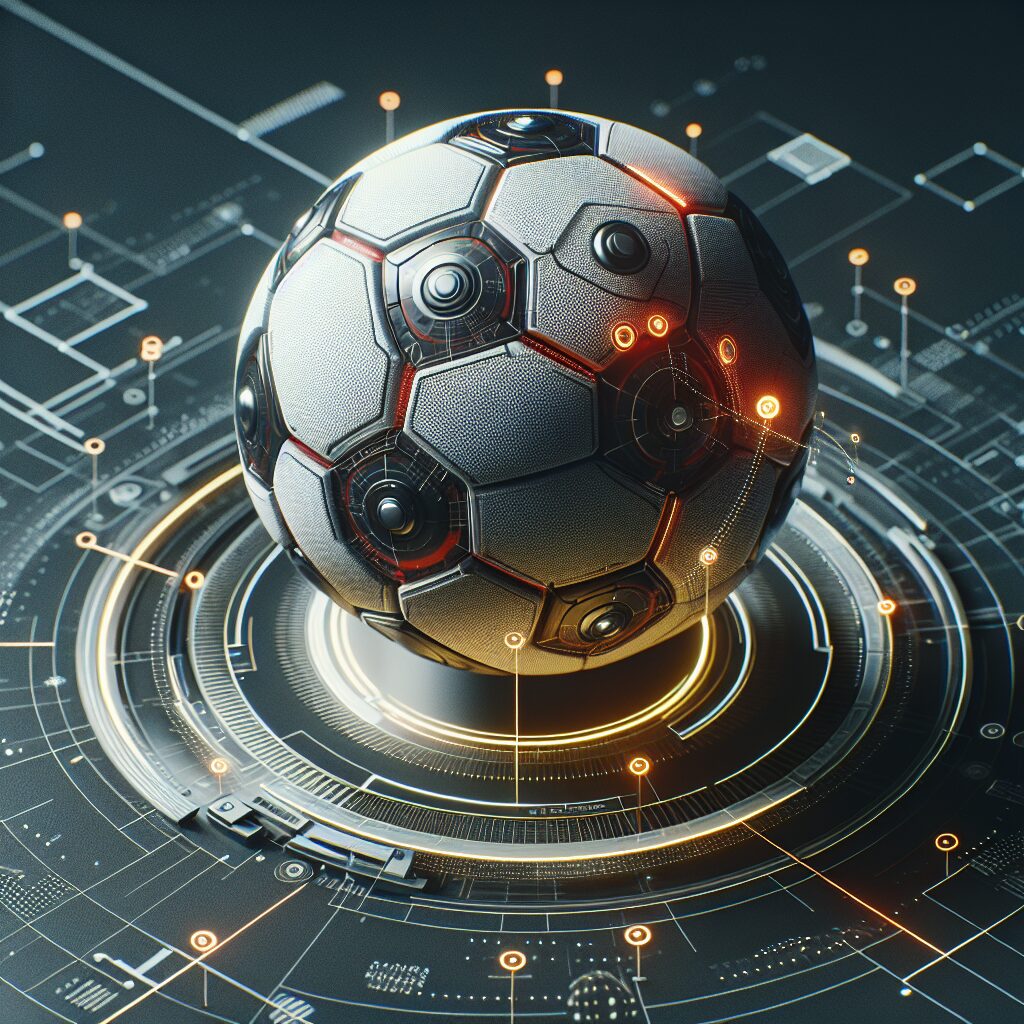Integrating Smart Technology: The Future of Ball Design
In today’s fast-paced world, the integration of smart technology into various aspects of our lives has become increasingly prevalent. From smartphones to smart homes, technology has revolutionized the way we interact with the world around us. One area that has seen remarkable advancements is the design of sports equipment, particularly when it comes to balls used in various sports. With the integration of smart technology, the future of ball design is poised to offer exciting new possibilities and enhancements.
Smart balls, equipped with sensors and advanced tracking systems, have the potential to revolutionize the way athletes and sports enthusiasts engage with their favorite games. These high-tech balls not only provide accurate data on factors like speed, trajectory, and spin, but they can also analyze players’ performance, offering valuable insights and feedback for improvement. Imagine a soccer ball that provides real-time feedback on your shooting technique or a basketball that assesses your shooting accuracy. These advancements in ball design not only enhance the playing experience but also serve as valuable tools for athletes to fine-tune their skills.
Moving forward, it is important to delve deeper into the key takeaways from the integration of smart technology into ball design. In the upcoming sections, we will explore the potential benefits and challenges of such advancements, discuss the impact on player development and training, and analyze the implications for the future of sports. So buckle up and get ready to immerse yourself in the fascinating world of smart technology integration in ball design.
Key Takeaways
1. Smart technology is revolutionizing ball design by integrating sensors and data analysis to improve performance and enhance player experience.
2. These smart balls can provide real-time feedback on various aspects, such as speed, spin, and trajectory, helping players identify and correct their weaknesses or refine their technique.
3. The integration of smart technology in ball design has the potential to revolutionize training and coaching methods, allowing for more personalized and effective feedback and analysis.
4. Smart balls have applications in a wide range of sports, including soccer, basketball, and golf, with potential benefits for athletes at all levels, from amateurs to professionals.
5. The future of ball design lies in the seamless integration of smart technology, offering players and coaches valuable insights and enhancing the overall sporting experience.
What is the Future of Ball Design with Smart Technology?
The world of sports is constantly evolving, and with advancements in technology, even the design of balls is undergoing a transformation. Gone are the days of traditional balls, as smart technology finds its way into the realm of sports equipment. From basketballs to soccer balls, integrating smart technology into their design holds the potential to revolutionize the way we play. In this article, we delve deep into the future of ball design, exploring the various aspects and possibilities that come with integrating smart technology.
Sensor Technology: Enhancing Performance and Analysis
One of the key elements in integrating smart technology into ball design is the use of sensor technology. By embedding sensors within the ball, it becomes capable of capturing data, providing valuable insights into various aspects of the game. These sensors can track speed, trajectory, rotation, and even measure the impact of the player’s strike. With this data, coaches, athletes, and fans can gain a deeper understanding of performance, allowing for targeted improvements and analysis.
Connectivity and Data Transmission
Smart technology in ball design goes beyond just capturing data; it also involves connectivity and data transmission. Through wireless technology, the ball can transmit data in real-time to connected devices such as smartphones or tablets. This instant data transmission opens up a whole new world of possibilities, enabling players and coaches to receive immediate feedback during training sessions or even in-game situations. Real-time data can provide critical insights, allowing for quick adjustments, strategizing, and enhancing overall performance.
Interactive Training and Gamification
The integration of smart technology in ball design also opens up avenues for interactive training and gamification. By connecting the smart ball to training apps or virtual reality platforms, players can engage in specialized training programs tailored to their needs. These programs can simulate game situations, challenge players, and provide personalized feedback for improvement. Moreover, the gamification aspect can add an element of fun and competition to training sessions, enhancing motivation and engagement.
Innovations in Ball Materials and Design
Integrating smart technology into ball design also necessitates innovations in materials and overall ball construction. The addition of sensors and connectivity components should not compromise the core functionality and performance of the ball. Thus, researchers and manufacturers are exploring new lightweight materials, strong enough to withstand the rigors of the game while accommodating the necessary technological components seamlessly. These innovations ensure that the smart ball not only delivers on performance metrics but also maintains the essence and feel of traditional balls.
The Potential for Smart Ball Accessories
The future of ball design with smart technology also opens up opportunities for various accessories to complement the smart ball. Companies can develop specialized gloves, footwear, or even sports clothing that can interact with the smart ball, enhancing the overall training experience. These accessories can provide additional data, enable targeted feedback, or introduce new game dynamics, further pushing the boundaries of sports performance and technology integration.
Guide: How to Choose the Right Smart Ball for Your Needs
1. Consider your sport: Different sports may require different features in a smart ball. Assess what aspects of your game you want to track and prioritize accordingly.
2. Research available options: Explore the market to find out which smart balls are available and compare their features, pricing, and compatibility with your devices.
3. Read reviews and user feedback: Check online reviews and user feedback to gain insights into the performance and reliability of the smart balls you are considering.
4. Seek expert advice: Consult with coaches, trainers, or experts in the field who have experience with smart ball technology.
5. Test before committing: If possible, try out the smart ball before making a purchase to gauge its performance and suitability for your needs.
Frequently Asked Questions
1. How does smart technology integrate into ball design?
Integrating smart technology into ball design involves embedding sensors, chips, or other electronic components within the ball. These components can track various metrics such as speed, spin, and trajectory, providing valuable data for analysis and improving performance.
2. What are the benefits of integrating smart technology in balls?
The integration of smart technology in balls offers numerous benefits. It allows for real-time data collection, helping players and coaches analyze performance and identify areas for improvement. It also enables the development of interactive training tools and provides a more engaging and immersive experience for players.
3. Are smart balls limited to specific sports?
No, smart technology can be integrated into balls for various sports including soccer, basketball, tennis, golf, and more. The technology can be customized to suit the specific requirements and demands of each sport, enhancing the overall playing experience and performance.
4. Can smart technology compromise the durability of the ball?
Efforts are made to ensure that the integration of smart technology does not compromise the durability of the ball. These technologies are designed to withstand the impact and physical demands of the game. Manufacturers continually strive to improve the durability and reliability of smart balls without affecting their playability.
5. How is the data collected by smart balls utilized?
The data collected by smart balls can be used for various purposes. Players and coaches can gain valuable insights into their performance and make informed decisions regarding training and strategy. Manufacturers can use the data to improve ball design and optimize performance. The data can also be utilized for research and development purposes within the sports industry.
6. Are smart balls compatible with existing sports equipment?
Yes, smart balls are designed to be compatible with existing sports equipment such as goals, basketball hoops, tennis court surfaces, etc. Manufacturers ensure that the integration of smart technology does not require significant changes to the existing infrastructure, enabling a seamless transition to using smart balls.
7. Are there any privacy concerns associated with smart balls?
Privacy concerns associated with smart balls are taken into account during the development process. The data collected is often anonymized, focusing on overall trends rather than individual player information. Manufacturers also implement secure data storage and transfer protocols to protect the privacy of players and ensure compliance with relevant regulations.
8. Can smart balls be used in professional competitions?
Yes, smart balls can be used in professional competitions, provided they meet the regulations and guidelines set by the respective sporting authorities. These balls undergo rigorous testing and certification processes to ensure their accuracy and fairness. The use of smart balls in professional settings can contribute to enhancing the overall quality of play and broadcasting.
9. What is the cost range of smart balls?
The cost of smart balls can vary depending on factors such as the sport, level of technology, and brand. Generally, smart balls are priced higher than regular balls due to the additional technology incorporated. However, as the technology evolves and becomes more widespread, the cost is expected to decrease, making smart balls more accessible to a wider range of players.
10. Will smart balls replace traditional balls entirely?
It is unlikely that smart balls will completely replace traditional balls. Traditional balls still hold value and are cost-effective for recreational play and certain contexts. However, smart balls offer a new dimension to the game, enhancing training and performance analysis. The coexistence of both types of balls allows players to choose the option that best suits their needs and preferences.
Final Thoughts: Integrating Smart Technology: The Future of Ball Design
The integration of smart technology into ball design opens up new possibilities and opportunities for athletes, coaches, and the sports industry as a whole. The ability to gather real-time data and analyze performance metrics in-depth can revolutionize training methods and elevate the overall level of play. Smart balls have the potential to reshape how we engage with sports, providing a more immersive and interactive experience.
As technology continues to advance, we can anticipate even more innovative developments in ball design. The future may bring further improvements in sensor precision, battery life, and data analysis capabilities. With the integration of smart technology, the boundaries of what is possible in sports may be continually pushed, leading to exciting advancements and discoveries in the field of ball design.




